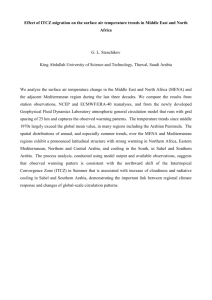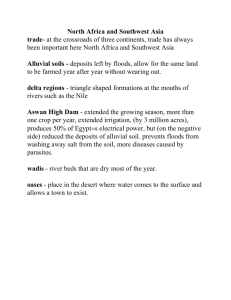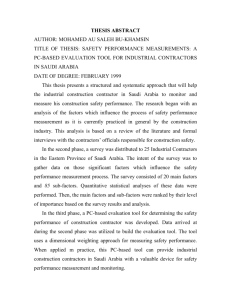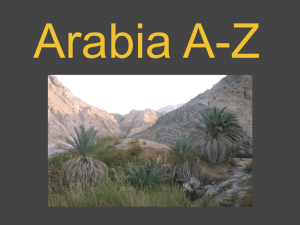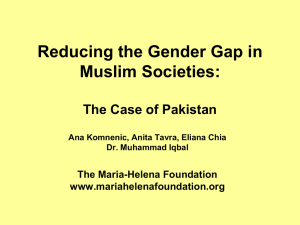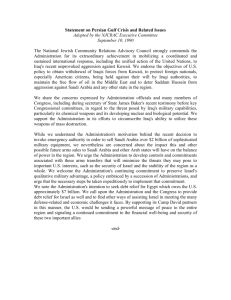034 - Space Geodesy Laboratory
advertisement
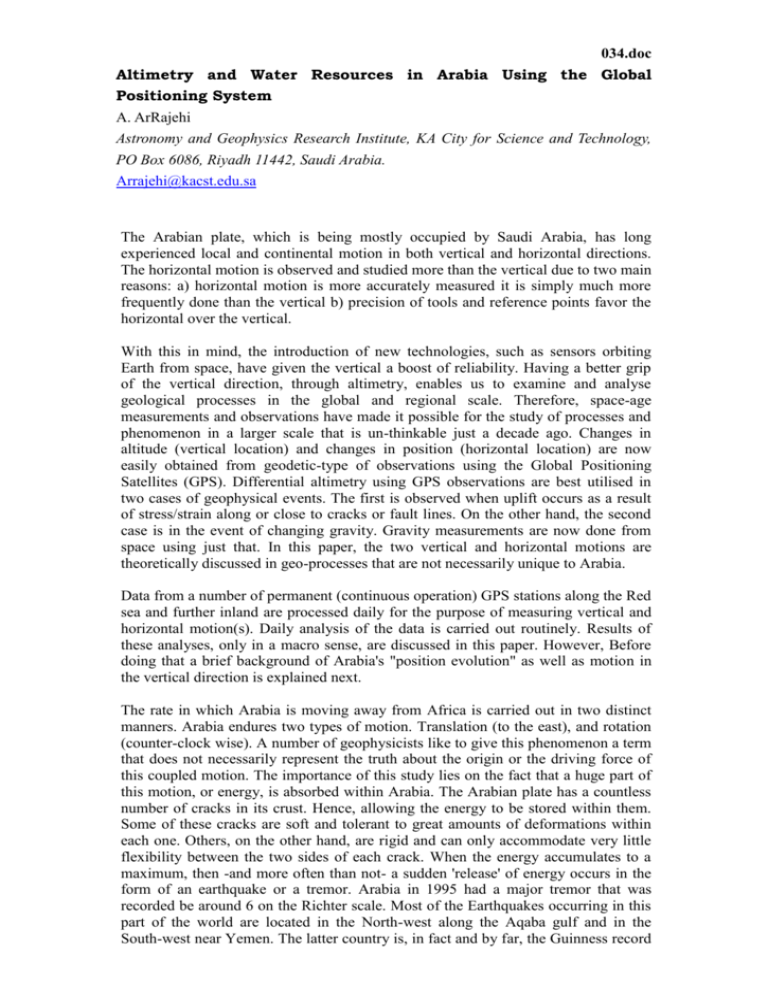
034.doc Altimetry and Water Resources in Arabia Using the Global Positioning System A. ArRajehi Astronomy and Geophysics Research Institute, KA City for Science and Technology, PO Box 6086, Riyadh 11442, Saudi Arabia. Arrajehi@kacst.edu.sa The Arabian plate, which is being mostly occupied by Saudi Arabia, has long experienced local and continental motion in both vertical and horizontal directions. The horizontal motion is observed and studied more than the vertical due to two main reasons: a) horizontal motion is more accurately measured it is simply much more frequently done than the vertical b) precision of tools and reference points favor the horizontal over the vertical. With this in mind, the introduction of new technologies, such as sensors orbiting Earth from space, have given the vertical a boost of reliability. Having a better grip of the vertical direction, through altimetry, enables us to examine and analyse geological processes in the global and regional scale. Therefore, space-age measurements and observations have made it possible for the study of processes and phenomenon in a larger scale that is un-thinkable just a decade ago. Changes in altitude (vertical location) and changes in position (horizontal location) are now easily obtained from geodetic-type of observations using the Global Positioning Satellites (GPS). Differential altimetry using GPS observations are best utilised in two cases of geophysical events. The first is observed when uplift occurs as a result of stress/strain along or close to cracks or fault lines. On the other hand, the second case is in the event of changing gravity. Gravity measurements are now done from space using just that. In this paper, the two vertical and horizontal motions are theoretically discussed in geo-processes that are not necessarily unique to Arabia. Data from a number of permanent (continuous operation) GPS stations along the Red sea and further inland are processed daily for the purpose of measuring vertical and horizontal motion(s). Daily analysis of the data is carried out routinely. Results of these analyses, only in a macro sense, are discussed in this paper. However, Before doing that a brief background of Arabia's "position evolution" as well as motion in the vertical direction is explained next. The rate in which Arabia is moving away from Africa is carried out in two distinct manners. Arabia endures two types of motion. Translation (to the east), and rotation (counter-clock wise). A number of geophysicists like to give this phenomenon a term that does not necessarily represent the truth about the origin or the driving force of this coupled motion. The importance of this study lies on the fact that a huge part of this motion, or energy, is absorbed within Arabia. The Arabian plate has a countless number of cracks in its crust. Hence, allowing the energy to be stored within them. Some of these cracks are soft and tolerant to great amounts of deformations within each one. Others, on the other hand, are rigid and can only accommodate very little flexibility between the two sides of each crack. When the energy accumulates to a maximum, then -and more often than not- a sudden 'release' of energy occurs in the form of an earthquake or a tremor. Arabia in 1995 had a major tremor that was recorded be around 6 on the Richter scale. Most of the Earthquakes occurring in this part of the world are located in the North-west along the Aqaba gulf and in the South-west near Yemen. The latter country is, in fact and by far, the Guinness record holder when it comes to the number of devastating quakes. The collapse of the Marib-dam due to strong Earthquakes in the forth century is later know as a land mark in the history of Arabian tribes. More than a hundred tribes of present Arabia trace their routes to that cursed valley in Yemen. Daily observations suggest that there is a close link between the vertical and horizontal motion in this part of the world. Concentrating this analysis to the north-west corner of Arabia suggest that the number of Earthquakes i.e. sudden changes in horizontal and vertical position is correlated to depleting water resources in that region. The net water loss (rainfall-drawn) is compared to the number of quakes in three years. On the other hand, horizontal motion of Arabia -both rotation and translation- is causing the northwest to experience a greater number of Earthquakes. This can be blamed for the following: 1. thin and fragile mantle in the northwest, 2. the northwest corner is located in an area know as the triple junction which means that here are three major fault-lines that meet there. Aqaba-junction is another name for it, and 3. although the expansion rate of the Red sea is greater in the south that of the north, most of the motion accommodated in the collision zones outside Arabia namely, Zagr Oral or Poster presentation Geodesy
